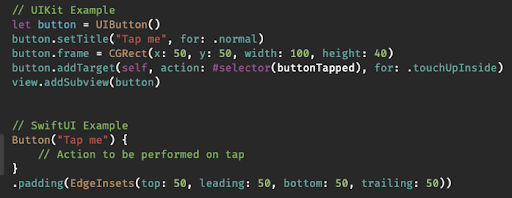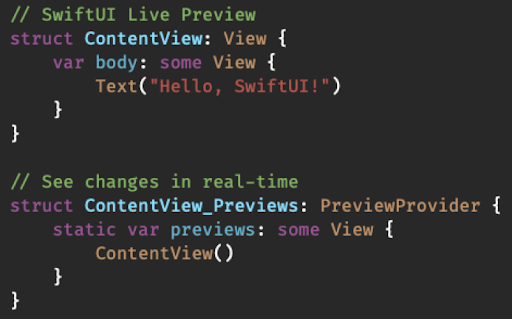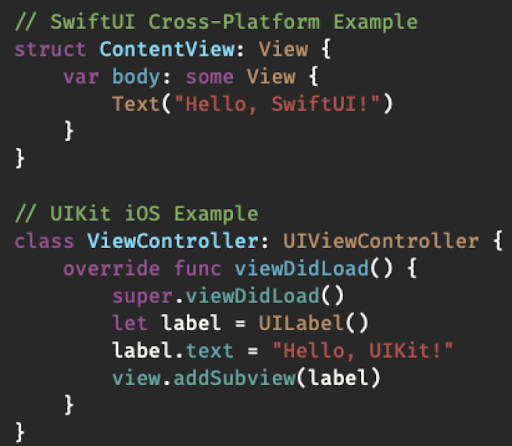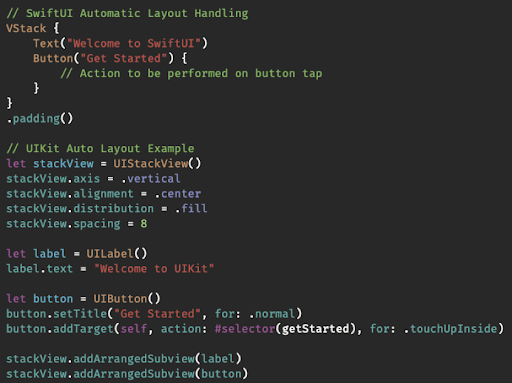SwiftUI was the second topic discussed during our last Mobile Forum. As we mentioned last week when discussing Jetpack Compose, the Mobile Forum is an internal forum of our Mobile team, where our developers discuss their projects, including technologies they use daily.
This week, discussing SwiftUI we have our Senior iOS Developer Voislav Stojkoski. He has over 12 years of experience as a Swift expert, highly skilled in SwiftUI and UIKit.

(Written by Voislav Stojkoski)
In the dynamic world of iOS app development, choosing the right framework is crucial for creating robust and scalable applications. SwiftUI, introduced by Apple in 2019, has quickly gained popularity as a modern and intuitive framework for building user interfaces. We will explore the benefits of SwiftUI over the traditional UIKit, backed by code comparisons to showcase its prowess.
Declarative Syntax
One of the primary advantages of SwiftUI is its declarative syntax. Unlike UIKit’s imperative approach, where developers specify step-by-step instructions on how to create and update the UI, SwiftUI allows developers to declare what the UI should look like and how it should behave. This makes code more concise, readable, and easier to maintain.

Live Preview and Interactive Development
SwiftUI’s live preview feature allows developers to see the changes in real-time as they modify the code. This significantly speeds up the development process and provides instant feedback, making it easier to iterate on the design and layout.

Unified Codebase for Multiple Platforms
SwiftUI’s design allows it to work seamlessly across all Apple platforms, including iOS, macOS, watchOS, and tvOS. This means developers can create a unified codebase for their apps, reducing the need to maintain separate code for different platforms. UIKit, on the other hand, requires platform-specific code for each target.

Automatic Layout Handling
SwiftUI introduces a powerful layout system that simplifies the process of creating responsive interfaces. The framework automatically adjusts the layout based on the device’s size and orientation, reducing the need for complex Auto Layout constraints.

Conclusion
SwiftUI emerges as a game-changer in the realm of iOS app development. It offers a more intuitive, efficient, and modern approach compared to the traditional UIKit. Its declarative syntax, live preview, cross-platform compatibility, and automatic layout handling make it a compelling choice for developers seeking a faster and more enjoyable development experience. As Apple continues to invest in and enhance SwiftUI, it is poised to become the go-to framework for creating immersive and feature-rich user interfaces across all Apple devices.













